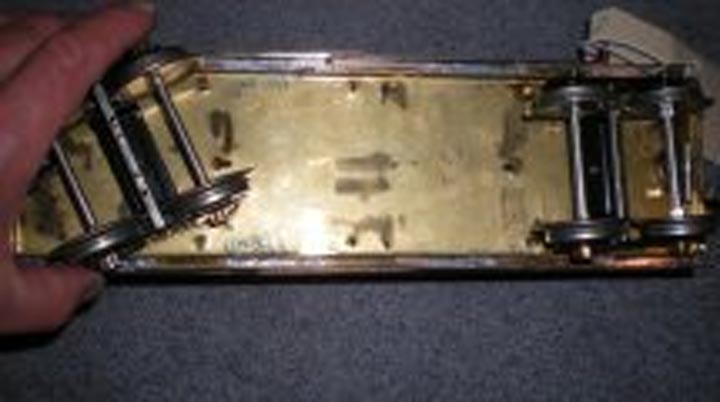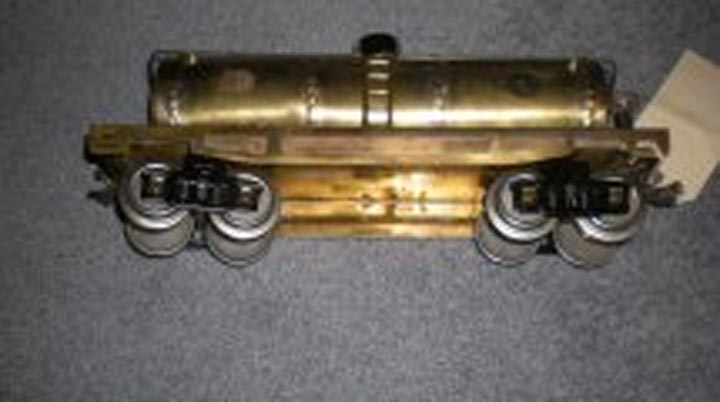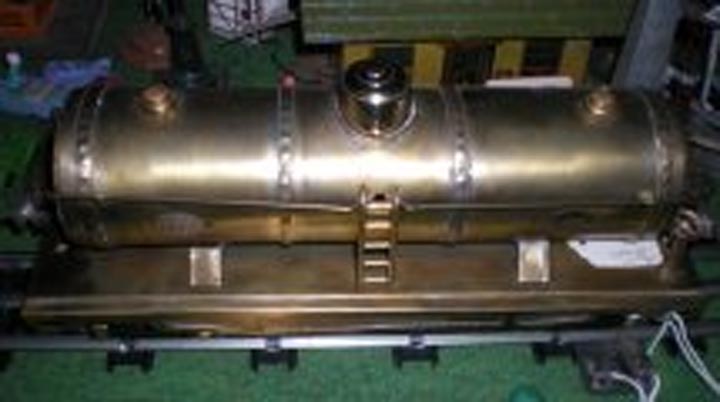Counterpoint: Comments on “A Prewar Prototype or 1 of a kind: The 200 Series Cattle car, Boxcar, Caboose, and Dump car
Comments on “A Prewar Prototype or one of a kind: The 200 Series Cattle car, Boxcar, Caboose, and Dump car” authored by Al DiCara, first published in the Spring 2010 issue.
Editor’s Note: There appears to be a differing of opinion with regard to the article titled “A Prewar Prototype or one of a kind: The 200 Series Cattle car, Boxcar, Caboose, and Dump car” authored by Al DiCara, first published in the Spring 2010 issue of e*Train: We present here the views of both Clem Clement and Glen Stinson. I have contacted Al DiCara and await his response and will publish it upon receipt.
Clem Clement:
The article in e*Train about “the prewar brass prototypes” cars is most interesting and also of concern to several members of TCA. I have written Mr. DiCara about these cars and their providence. Comments from TCA members Glenn Stinson and I follow:
I have a 215 (labeled 211) brass tanker in my collection of similar construction. Please note the attached photos. The steps seem the same as Mr. DiCara’s cars. The car is fairly light. The sheet metal brass is fairly thin. Slots were punched by hand so there is metal bent inward around the slots. Of particular interest are the sheared off rivets on the truck cross bar. The ones shown on his cattle car are cut the same as the rivets on my 215. The truck pivot studs are cross-smashed to the bolster exactly like the studs on your cars. Early Lionel 200 series trucks and MYH trucks use different stub smasher tools. My couplings are repro as the other cars appear to me. The side add-on pieces filling in the truss section are sweat soldered to the truss as the others appear to be attached. The add-on side section adding 7 mm to the width of each car frame side of all cars seem similar. The rivet count on each truck frame side is different from early Lionel 200 series trucks, but similar to MTH. The axle swedge length on all cars seems the same; longer that Lionel’s.
I use identification tags for all trains describing them. The tag on my 215 shows I bought it in 1994. The tag that came with the car indicates the car came from by Ed Mobley of Frederick Md. At the time I purchased my car there was a complete set of 200 series cars available. I selected only the tanker.
At onetime I owned an early 211 in dark olive. Sides were two parts soldered together. Car was heavy. It is shown in the 1926 Lionel catalogue.
In sum, this commentator feels there is serious question about Mr. Di Cara’s cars being preproduction models. While I have not inspected Mr. DiCara’s cars in person nor he my car, I suggest care be taken if the cars be offered as genuine prewar prototypes.
Clem Clement
TCA 64-987
Glenn Stinson:
Editors note- This article constitutes an official opinion of the TCA Standards Steering Committee.
I was contacted by Mr. DiCara in late January, 2010 to “possibly help me with the authenticity of 4 Lionel Standard Gauge Prototypes I own and the eventual sale of them”. After Mr. Dicara made an inquiry to the TCA Library, he was referred to me as a long term member of the TCA Standards Steering Committee.
Mr. DiCara indicated that he had “two pages of history and 17 supporting documents”. Several pictures of the subject cars and the “two pages of history” were submitted for review. The history indicated that Mr. DiCara bought them from the estate of the deceased train collector that represented that he “was given these 4 cars, as a gift, by Mario Caruso.” The actual supporting documentation Mr. DiCara referenced was not submitted for review.
On Feburary 19th, 2010 I responded to Mr. Dicara as follows: “During the course of my review of the material you submitted, I consulted with the other members of the Standards Steering Committee and the following constitutes an opinion of the committee. The opinion is based on our review of materials and photos you submitted by email and did not include a hands-on evaluation of the pieces. We believe that it is possible that the four cars shown in your photos are prototype models used by Lionel but that it is not probable (Emphasis added). The paper trail you provided certainly seems to document the source of the cars but the cars themselves raise many questions about their quality, design, parts used, and more. Collectors are a hard bunch to convince of anything and the Committee must be very conservative in its opinions. I don’t really think I have any suggestions on taking your research further short of the ultimate— photos showing the cars at the Lionel factory.”
Mr. DiCara responded a few days later “Thanks so much for yours and the committee’s input. The best that came out of your findings is that they are definitely NOT prototypes.”
Glenn K. Stinson, 66-1641
TCA Life Member
TCA Standards Steering Committee








